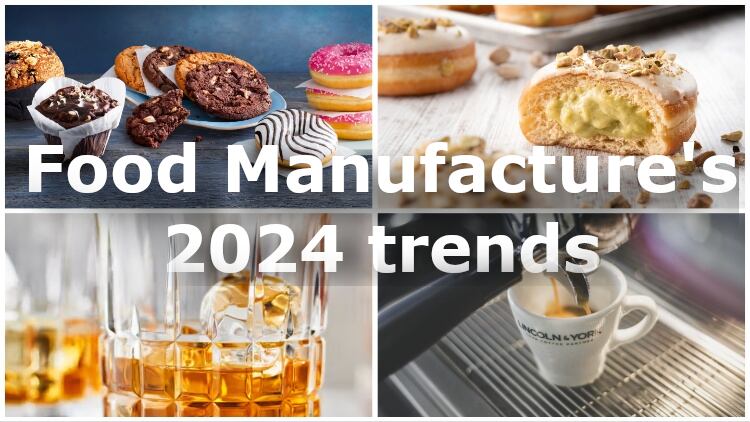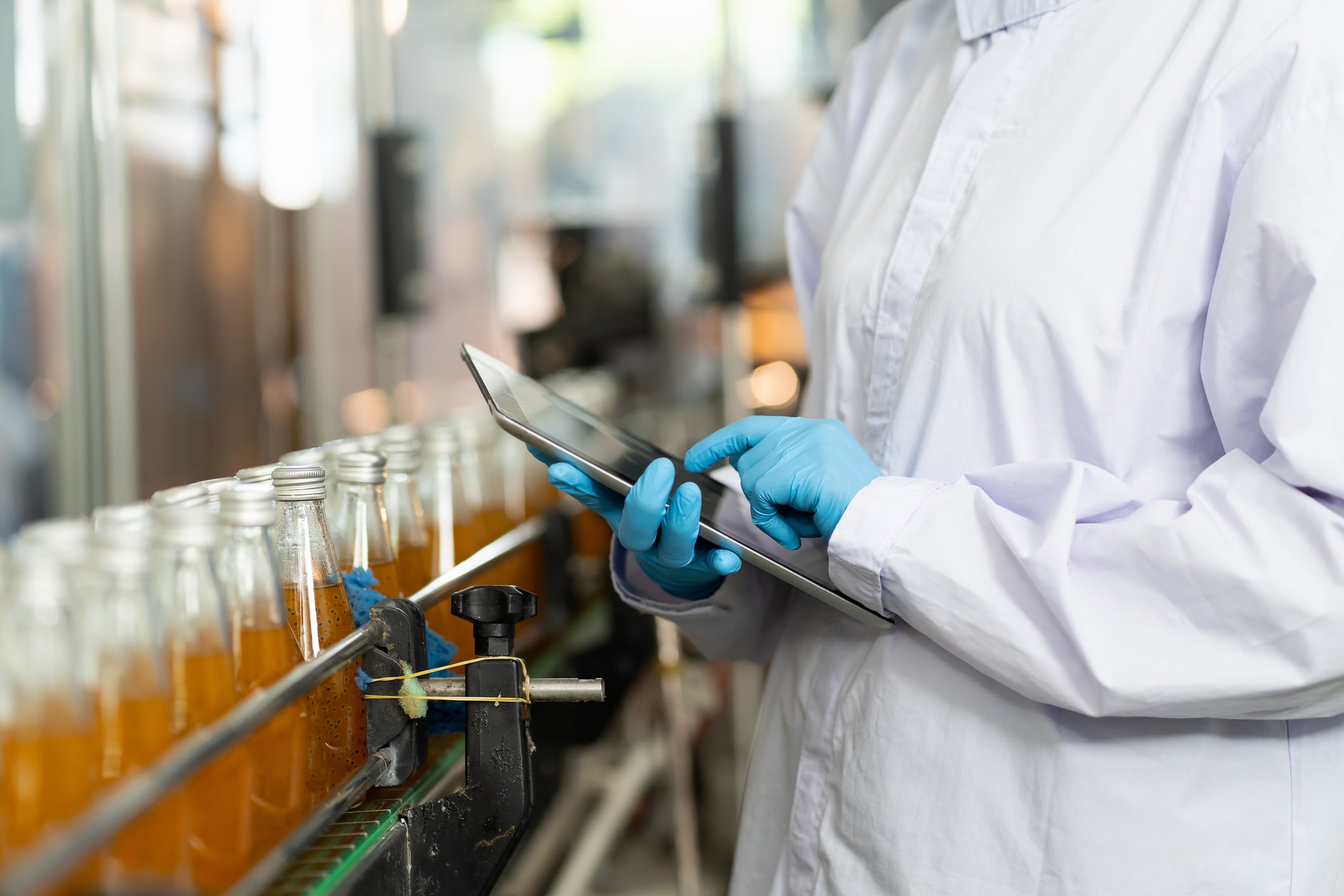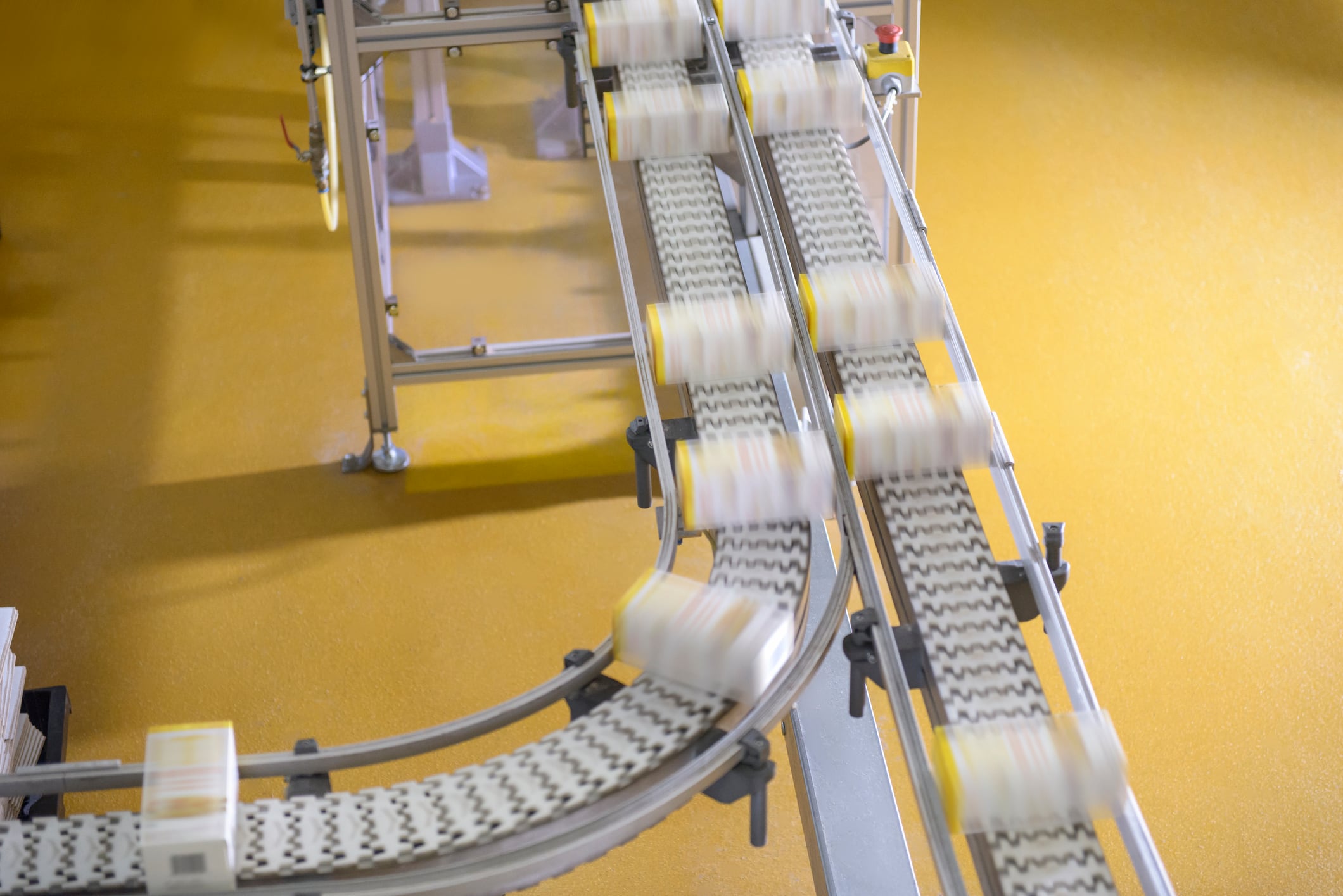The exclusive, strategic visionary breakfast was co-chaired by Food Manufacture’s editor, Bethan Grylls, and Infor’s digital transformation expert, Andrew Dalziel, with the format allowing for open-forum discussion under Chatham House Rules. This was preceded by an especially curated presentation from senior analyst Edward Bergen of FutureBridge Food & Nutrition.
The presentation examined the key trends impacting the food and beverage space, giving way for thought provoking considerations on where mindful investments could be made and what areas of innovation need be monitored closely.
Among the series of constants defining the future of food and drink, sustainability was picked out as an area of focus. This subject was also reflected as a key topic of conversation among the delegates, as well as supply chain challenges in light of today's geopolitical climate.
Trends in sustainability and technology
The presentation pulled out three main themes within the sustainability sphere – supply and withstand; commodity clones; and ‘greendrying’.
Supply and withstand
In the context of the first trend, we will see the food ecosystem implementing more proactive sustainable solutions to solve inequalities, environmental challenges and shifting power dynamics to ensure resilience.
The technologies which are likely to play a part in this include regenerative agriculture and waste valorisation, alongside data monitoring which is likely to help enhance and guide the other former two.
One of the upward trends within this area has been soil health management, which has nearly doubled in growth in terms of ‘exploration’, moving from ‘early stage innovation’.
There have been several examples of technology in this field already emerging, including listening to creepy crawlies in the soil to gain insights into its health and therefore crop fertility and biodiversity.
Commodity clones
The second major trend, commodity clones, referred to alternatives in a range of forms – including resilient crops, plant-based ingredients and synthetic solutions. It was argued that there was still a notable and contradicting trend of natural foods and lab-grown varieties too.

For climate resistant solutions, it was predicted that this will move from nice to have to must have. Starbucks was highlighted as an interesting case study, having already introduced six coffee tree varieties designed to be resistant to diseases and climate impact.
The stats also revealed that precision fermentation was outpacing both plant-based options and cultivated proteins drastically when it comes to innovators’ plans. In other words, most are looking at the former over the latter.
Greendrying
The final trend in the presentation, greendrying, is a reaction to the greenwashing we’ve been witness to – in 2021, a study from the European Commission and national consumer authorities of green claims online (all sectors, not just food) found that 42% were exaggerated, false or misleading.
Greenwashing has been driven by consumers seeking to purchase environmentally sound products, while what is referred to as ‘greenhushing’ (a more modern term that describes the act of obscuring green acts) has followed in response of ‘cancel culture’.
Pushed by both new regulations such as EUDR and intensifying consumer scrutiny, we’ll hopefully see a move away from hushing and more towards a wider spread ‘totally transparent’ approach, wherein businesses discuss their sustainability journeys – both the ups and downs – more openly. This will be complemented by innovative solutions that give way to validating true claims more rigorously and likely rely on technology and third-party certifiers.
As was raised by a few attendees, now that sustainability targets have been set, the future for business leaders is how they can achieve them. The challenge: reaching those goals under current global instability.
Overall, the message in response to these trends was clear: understanding and tracking your supply chain is going to be really important.
"The gloves are off in 2024. Forget superficial sustainability gestures – governments, NGOs, and consumers demand verifiable action. Supply chains will be dissected, labels scrutinised, and greenwashing ruthlessly exposed. The consequences? More than just reputational dents. Expect supply chain disruptions, communication restrictions, and financial repercussions. The only shield? Proactive transparency. Full traceability, laser focus on high-impact areas, and agile solutions are the new currency," Bergen reflected.
Offering further context to why such technology is important, Dalziel added: “Technology can provide the essential visibility, analytics and intelligence to solve business challenges, exploit new opportunities and take better decisions. It can also automate repetitive task to enable workers to focus on the value adding activities and decisions.”
Going back to basics – and solving the truly important things
Research highlighted at the event also showed there is a correlation between ESG level and financial performance, with a review of more than 1,000 studies finding that more than half (58%) report a positive impact on purse strings.
“Investing in what might seem like an expensive change or sometimes revolutionary change really does bring in that positive result in the medium and long term,” a member of the roundtable suggested.
However, it was agreed that whilst flashy technology such as precision fermentation was an interesting and exciting prospect, we need to go back to basics when it comes to solving problems.
“There is a portfolio of investment opportunities, some proven and available today, and the pay back is quick,” said one delegate.
“So why would you not prioritise those ahead of some of the bigger, longer-term opportunities that come with more risk?
“It’s boring stuff, but with labour availability a problem, we need to look at how we automate things like trolley packers picking and loading product onto trucks.”
“We’re just making it too complex,” another agreed, “we’re solving very complex problems” before fundamental (and perhaps simpler) issues.

One example was our fixation on plastic packaging.
“Packaging is quite an emotive thing as consumers can see it. But when you look behind the products, there's a lot more environmental savings at risk by playing fast and loose with packaging.
“The important thing is that we have a holistic approach to sustainability.”
Others agreed: “In a very complex world, we need to try and keep this as simple as we can and not over engineer things because we haven’t got the time or the money to do that…”
But it was also emphasised that unless consumer behaviour changed and retailer perceptions too, the focus would continue to be on be areas that were not going to incite radical change.
The problematic issue of retailers demanding differentiation in areas such as sustainability, was raised as another area of concern.
“What is more helpful is when they band together under a body such as WRAP and there’s a consistent ask.”
Another added: “The question is, are people willing to pay for sustainability? I don't see either our customers, in terms of the retailers or consumers, willing to pay for sustainability yet.”
“But at the same time, from a business perspective, there's some significant CapEx investments that would be needed to drive the sustainability agenda and also significant resource required in terms of expertise tracking.
“So it the feels like there's a lot of cost and CapEx that's needed to move the needle, but we haven't got the demand yet.”
“There's a balance between what's actually making your business more efficient and profitable, versus some of those other initiatives that are maybe more consumer-driven but have a higher cost associated with them,” said another.
Interestingly, members of the roundtable said that they almost preferred regulation forcing new trends, subject to it ‘being sensible’. The plastic bag cost was given as an example of where law has helped change habits almost overnight.
“Regulation is almost more reliable and it impacts everybody and, theoretically, it should be easy to drive.
“Bringing in regulation is almost easier to deal with than trying to understand exactly what the complex consumer wants, especially if there's investment involved, because you could invest in something and it doesn’t land.”
“Regulation is fine as long as you get global consistency,” another interjected.
“Regulation can be hugely punitive to certain areas of the world if it's not got global consistency and what we can't afford to do is what's happened with some of the other manufacturing sectors, where we punish the UK manufacturers and end up exporting our emissions to China.”
“Where we see the most progress and where we’ve moved the fastest is when we’re working with industry bodies as opposed to government regulation where – in our experience – it’s been pushed back time and time again and there’s very little clarity until the last moment,” another said.
Overall, the group agreed that longer term commitments in the form of contracts need to happen.
“Retailers perhaps need to do their bit with longer term contracts but we also need help from lenders.”
Whilst financial perks such as lender discounted rates have been known to happen in the sector, the consensus in the group is that we’re most likely ‘a long way off’ from lenders not lending to ‘non-sustainable’ companies.
In the context of longer-term commitments and action, one delegate added: “It can’t just be a revolution at our door.”
Current solutions to volatility
When it comes to technology everyone agreed the ‘shiny’ things, like AI predicting trends, would be ideal additions to the portfolio, but we’re not quite there yet.
Its real use so far has been solving repetitive manual admin tasks and helping to plug gaps in labour shortages, for example sensors which can run engineering checks.
An area of big concern for wider technology rollout in the future, however, was integration and avoiding tools and data from becoming siloed, especially across multiple sites.
“One of the things we're kind of grappling with at the moment is how you link them all together so that you don't just end up with lots of disparate sites doing disparate things because they want to be innovative themselves.”
In terms of dealing with unpredictable events it appeared that one of the key solutions right now is dual sourcing: moving to a system wherein there are multiple locations making a product.
The delegates explained that this is not just a trend within their own operations either, but something some are also demanding their suppliers adhere to too.
“We’ve moved away from that kind of single sourcing approach because it's more important to have resilience.”

There has also been more emphasis on longer term partnerships, with contracts shifting to multi-year deals, as well as a move to localisation.
“That was a trend started by Covid and accelerated by conflict. But local elements have got a really strong consumer story too,” one delegate stated.
And whilst the leaders concurred that preparing for volatility is of the utmost importance within their own businesses, they added that this included sharing the load with their suppliers and customers.
As was shared in the session, retailers in particular often expect events to have much shorter-term impacts, but these challenges usually linger well into the future, for example inflation or the effect of one season’s conditions on another.
So it seems that, for these leaders at least, the sector needs to rethink its focuses. The phrase ‘don’t run before you can walk’ comes to mind.
Technology certainly has its place and can definitely make areas of business easier, but it needs to be centered on solving the foundational issues before we move onto the more ‘exciting’ ventures.
Indeed, the food and drink sector is known for its sluggish embrace to technology, but perhaps that’s because solutions thus far haven’t been solving the right things.
"Complexity is dead. Simple, impactful action reigns," said Bergen. "Don't just talk the talk, walk the walk. Embrace transparency, prioritise impact, and move with agility. This isn't a trend, it's the new normal. In 2024, sustainability isn't optional, it's the price of admission."





